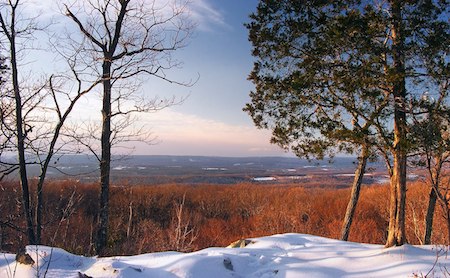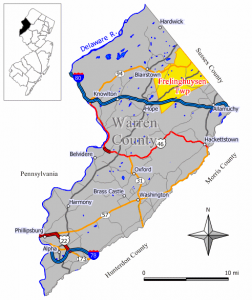Township History
Because the habitats of the Township are so varied and because, until recently, there has not been much development, the Township has a great diversity of wildlife and plant species. Of these habitats, the richest is probably the 565 acres at Mud Pond. At least 23 rare New Jersey plant species have been documented there, making this one of the most species-rich sites in the state. As many as 500 other native species have been found on this site as well.
Other attractive open-space areas include Jenny Jump State Park, with its views of the Delaware Water Gap, Kittatinny Mountain, and Great Meadows valley. Jenny Jump Park has hundreds of acres of hemlock forest and a large diversity of ecosystems, from fens to rock ledges.


The Township’s early history centers on the village of Johnsonburg. In 1753, Johnsonburg, an important stage coach stop, became the County Seat and home of the County court and jail; thus the village’s first name, Log Gaol. In 1911, the Delaware, Lackawanna & Western Railroad opened a station in Johnsonburg, on what was then the railroad’s main line from Hoboken, NJ to Buffalo, NY. The railroad was vitally important to the dairy farmers of the area, who shipped milk and dairy products east to Newark and New York City. The Cutoff, a high, raised railroad embankment completed in 1912, runs straight through the center of the Township. When it was built, the Cutoff was ranked as a ‘wonder of the world.’ This 28-mile straight, level route, from Lake Hopatcong in Sussex County to the Delaware River, is still considered an engineering marvel for its many cuts and fills and its innovative use of reinforced concrete.
As long-time Township resident Sam Moore wrote in 1989, “Today, Frelinghuysen is still an attractive rural community, though it feels more and more the pressure of an expanding metropolitan area. Frelinghuysen is fighting hard to keep its country character.”
Link to City Data for more about our township
Township of Frelinghuysen listing in Wikipedia